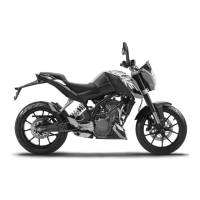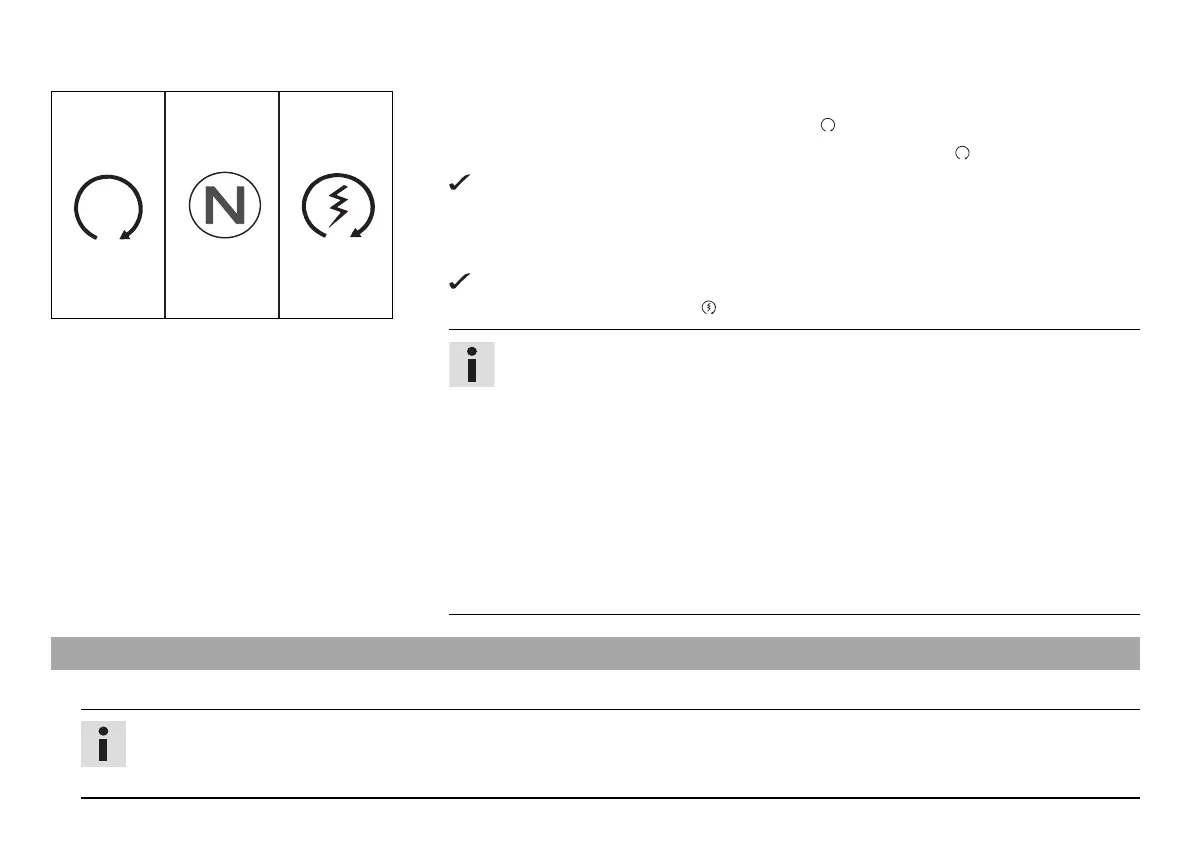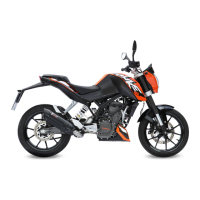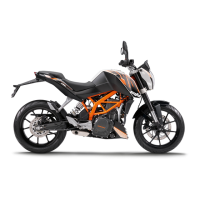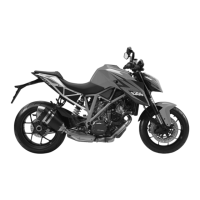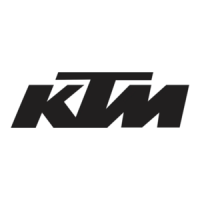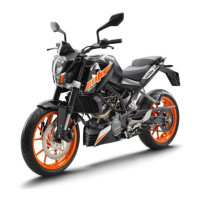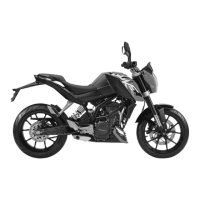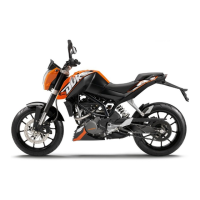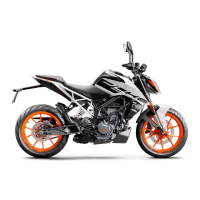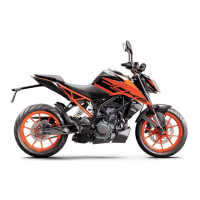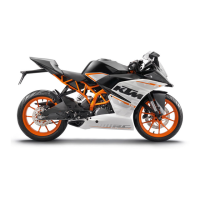8 RIDING INSTRUCTIONS 61
B00782-10
– Sit on the vehicle, take the weight off of the side stand, and move up all the way.
– Turn the emergency OFF switch to the position .
– Switch on the ignition by turning the ignition key to the position .
After you switch on the ignition, you can hear the fuel pump working for about two
seconds. The function check of the combination instrument is run at the same
time.
– Shift gear to neutral.
The green idling speed indicator lamp N lights up.
– Press the electric starter button .
Info
Do not press the electric starter button until the combination instrument func-
tion check is finished.
When starting, DO NOT open the throttle. If you open the throttle during the start-
ing procedure, fuel is not injected by the engine management system and the
engine cannot start.
Press the starter for a maximum of 5 seconds. Wait for a least 5 seconds before
trying again.
This motorcycle is equipped with a safety starting system. You can only start the
engine if the transmission is in neutral or if the clutch is pulled when a gear is
engaged. If the side stand is folded out and you shift into gear and release the
clutch, the engine stops.
8.3 Starting off
– Pull the clutch lever, engage 1st gear, release the clutch lever slowly, and simultaneously open the throttle carefully.
Tip
If the engine dies while starting off, only pull the clutch lever and press the electric starter button. You do not need to shift into
neutral.
